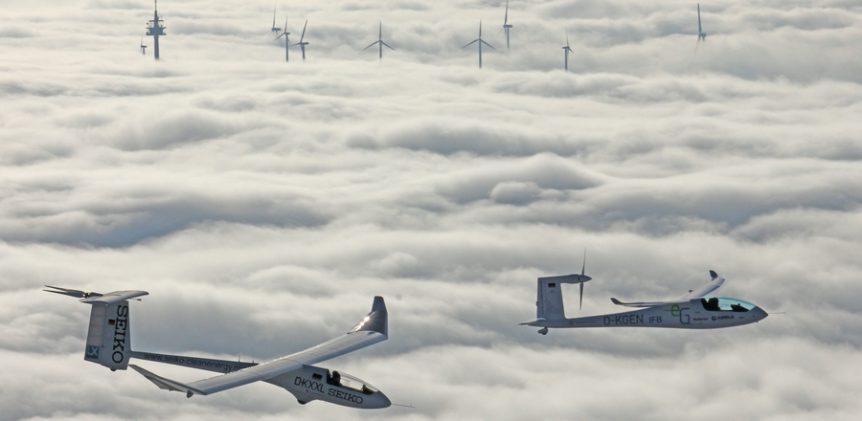Birds of the Same Tail Feather Configuration Prof. Dipl.-Ing. Rudolf Voit-Nitschmann (emeritus) had a lot to do with designing the 1996 Icare II solar-powered sailplane and the 2011 e-Genius. Icare II set several world records in its 20 years, most under the guidance of pilot Klaus Ohlmann. e-Genius won the award for being the quietest airplane at the Green Flight Challenge held in Santa Rosa, California, and was a close second to Pipistrel’s G4 in passenger miles per gallon (equivalent) energy use. Dipl.-Ing. Voit-Nitschmann was kind enough to explain to your editor how the propeller center came to be at the top of the tail on e-Genius. It’s a similar configuration to that on the Icare II*, and one he had found to provide the greatest undisturbed air to the propeller and the least added friction drag, since only the lower part of the blade crossed in front of the upper part of the vertical fin and rudder. This configuration …
Flying e-Genius for Two Years
At this year’s Electric Aircraft Symposium, Rudolf Voit Nitschmann, Len Schumann, and Ingmar Geiss shared their well-documented experiences with e-Genius, second place winner in 2011’s Green Flight Challenge. Flown by Erik Raymond and Klauss Ohlmann, the airplane managed 397.5 passenger miles per gallon on its 200-mile trek around a closed circuit between Santa Rosa, California and the distant geothermal power plants that provided the electricity for its flight. As Voit Nitschmann, leader of the e-Genius team since 2005 noted, one must design electric aircraft around the beneficial aspects of such vehicles to gain the greatest performance. Originally slated to be hydrogen powered, e-Genius mounts its 59-pound motor on the leading edge of the vertical rudder, more difficult with a heavier internal-combustion engine. This permits ample propeller clearance, provides blade protection and allows a short, retractable landing gear that is light and simple. With no turbulent flow over the nose, the cockpit can be streamlined like that of a sailplane and …

